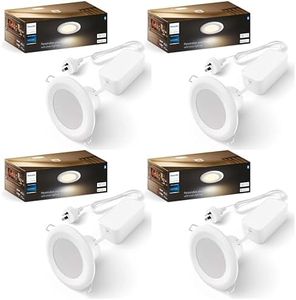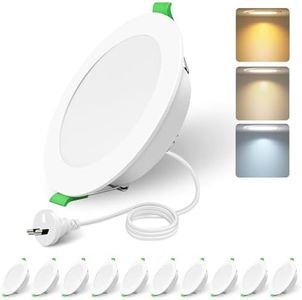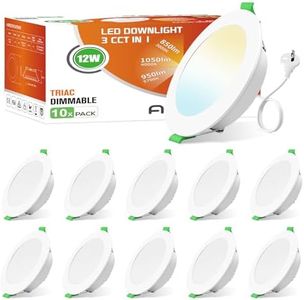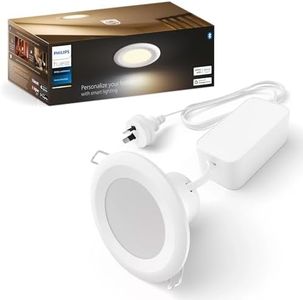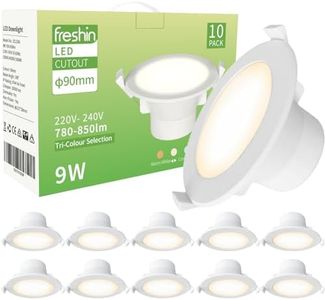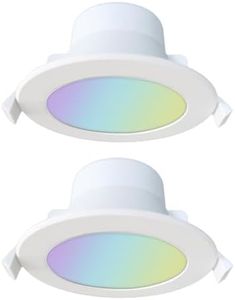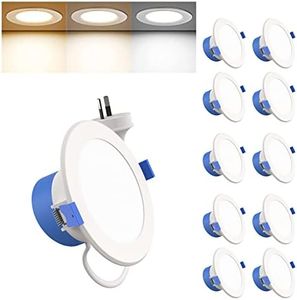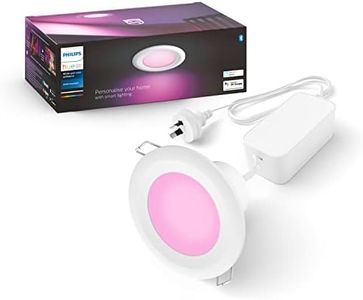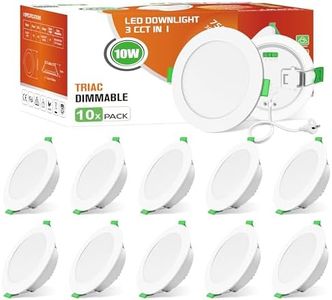We Use CookiesWe use cookies to enhance the security, performance,
functionality and for analytical and promotional activities. By continuing to browse this site you
are agreeing to our privacy policy
10 Best Recessed Lights
From leading brands and best sellers available on the web.By clicking on a link to a third party's website, log data is shared with that third party.
Buying Guide for the Best Recessed Lights
Choosing the right recessed lights, often called can lights or downlights, is all about understanding your space, how much light you want, and the look you’re going for. Recessed lights can blend into your ceiling, provide focused light, or even create a mood, so picking the right options makes a big difference. Start by thinking about where you’ll put them—kitchen, living room, bathroom, or hallway—and what you want the light to do in each area. Once you understand your needs, you can look for lights with features that match.Trim SizeTrim size is the diameter of the visible part of the recessed fixture, usually measured in inches. This spec affects the style and the amount of light spread. Smaller trims (like 3 or 4 inches) are best for accent or task lighting, giving a subtle look, while larger trims (5 or 6 inches) offer broader, general illumination, ideal for big rooms. When picking trim size, consider the size of your room and the type of lighting effect you want.
Type of HousingHousing refers to the part of the fixture that goes inside the ceiling. There are different types: new construction, remodel, and IC-rated (insulation contact) or non-IC rated. New construction housing is for open-ceiling spaces, while remodel housing is meant for existing ceilings. IC-rated housings are safe next to insulation, while non-IC should not touch insulation. Match the housing type to your room’s situation and check if your ceiling has insulation.
Light Source (Bulb Type)Recessed lights can use different types of bulbs, such as LED, incandescent, or compact fluorescent (CFL). LEDs are the most common now—they last long, use less energy, and often come in dimmable versions. Incandescent bulbs are less efficient and generate more heat. When choosing a light source, LEDs are the best fit for most people thanks to their reliability and efficiency.
Color TemperatureColor temperature tells you what “color” the light will look like, measured in Kelvins (K). Lower values (2700K-3000K) are warm and cozy, good for living rooms and bedrooms. Mid-range (3500K-4000K) offer neutral white, often picked for kitchens and work areas. Higher values (5000K+) are cool daylight-like, useful for garages and utility spaces. Choose a color temperature based on the mood you want for your room.
Beam AngleBeam angle describes how wide the light spreads. Narrow beam angles (under 35°) make a focused “spotlight,” good for highlighting artwork or architectural details. Wider beams (over 60°) give broad, general light, perfect for lighting up a whole area. Think about whether you need focused light or broad illumination, and select accordingly.
Dimming CapabilitySome recessed lights can be dimmed, letting you adjust brightness as needed. Not all fixtures support dimming, and you need the right dimmer switch and compatible bulbs. If you want to change the mood or save energy, look for dimmable options and make sure your setup can handle it.
Wet or Damp RatingLights rated for wet or damp locations can safely be used in bathrooms, outdoors, or under covered porches. If you’re installing in areas with moisture, make sure you choose fixtures marked as 'damp' or 'wet rated.'
